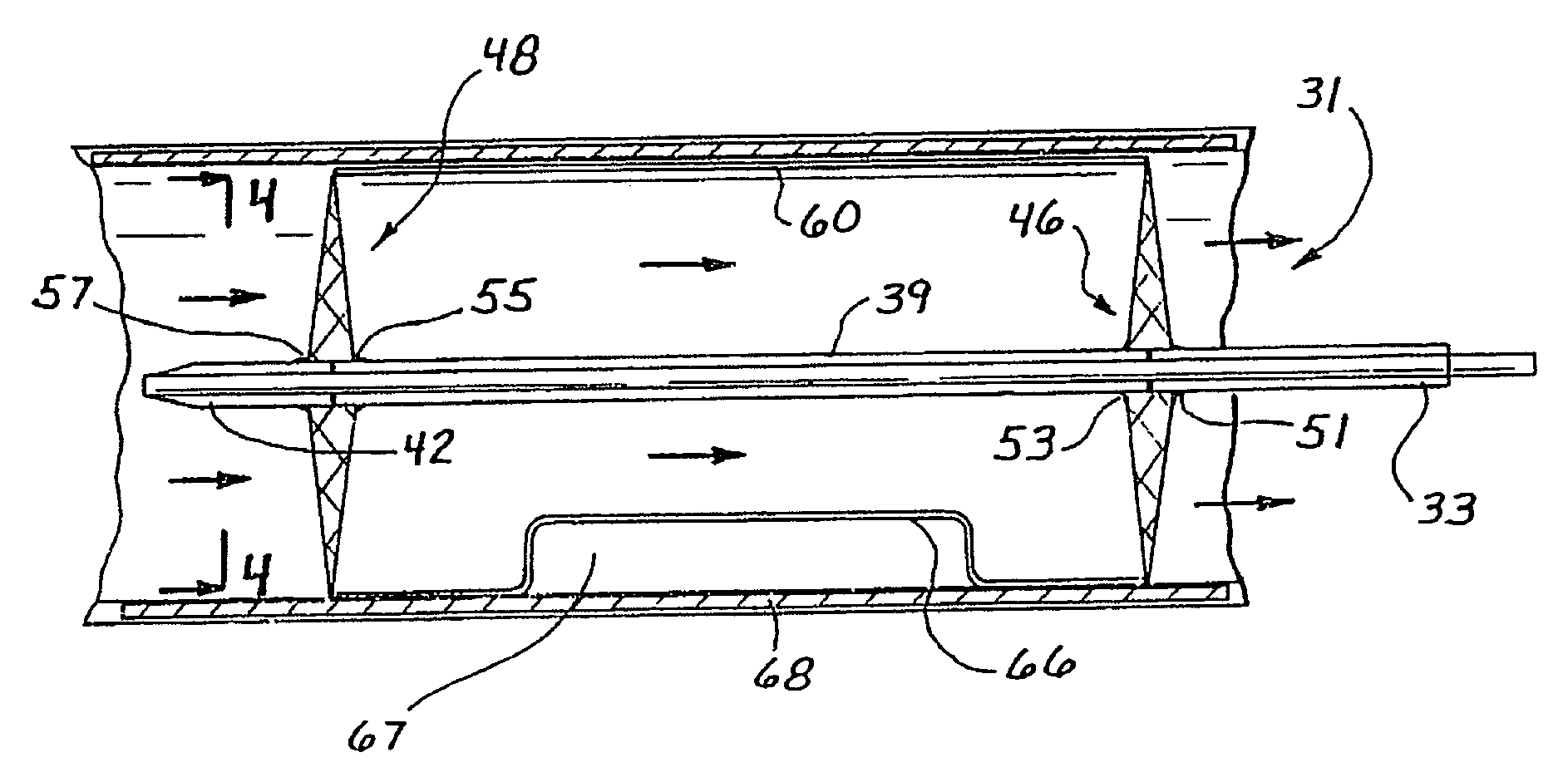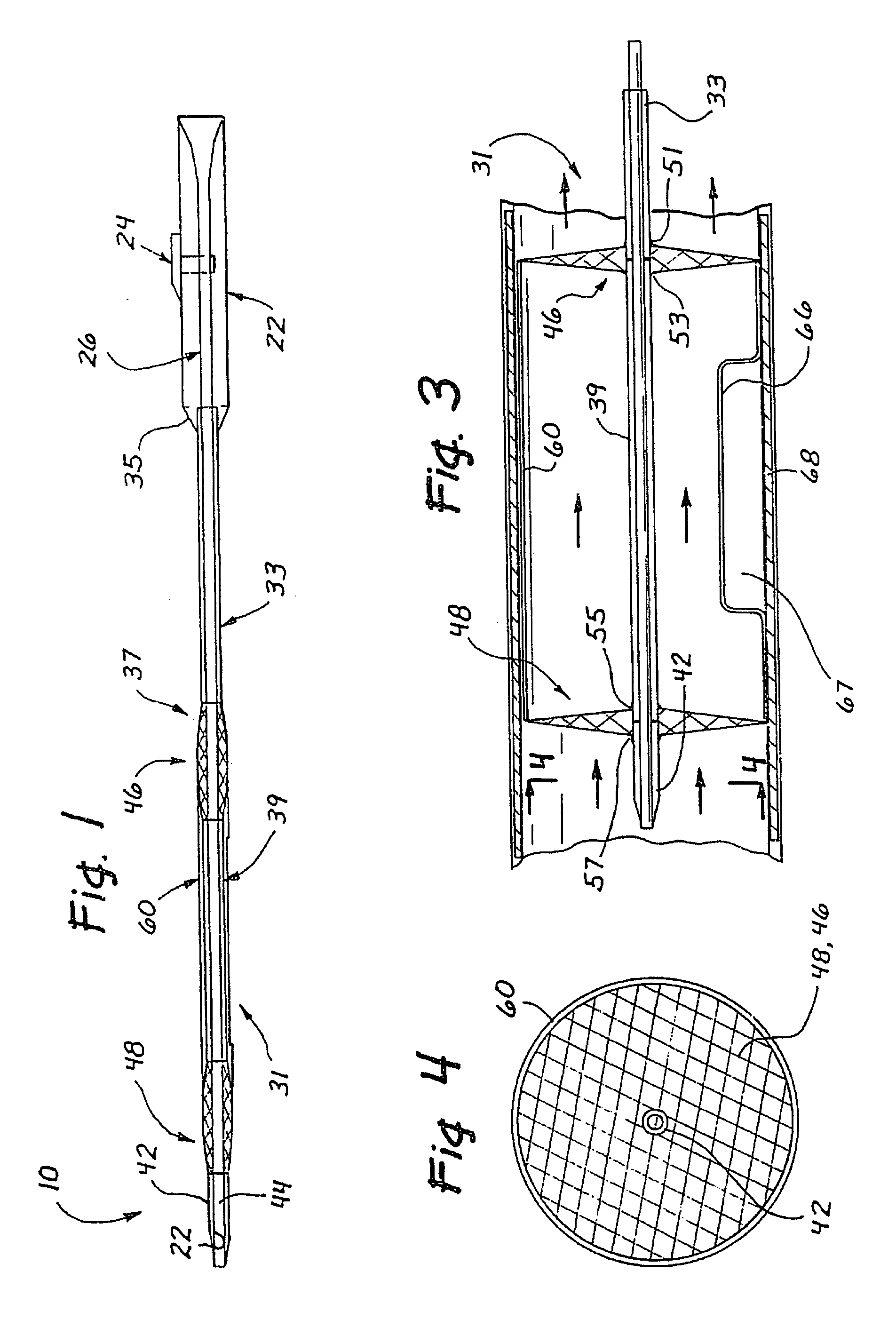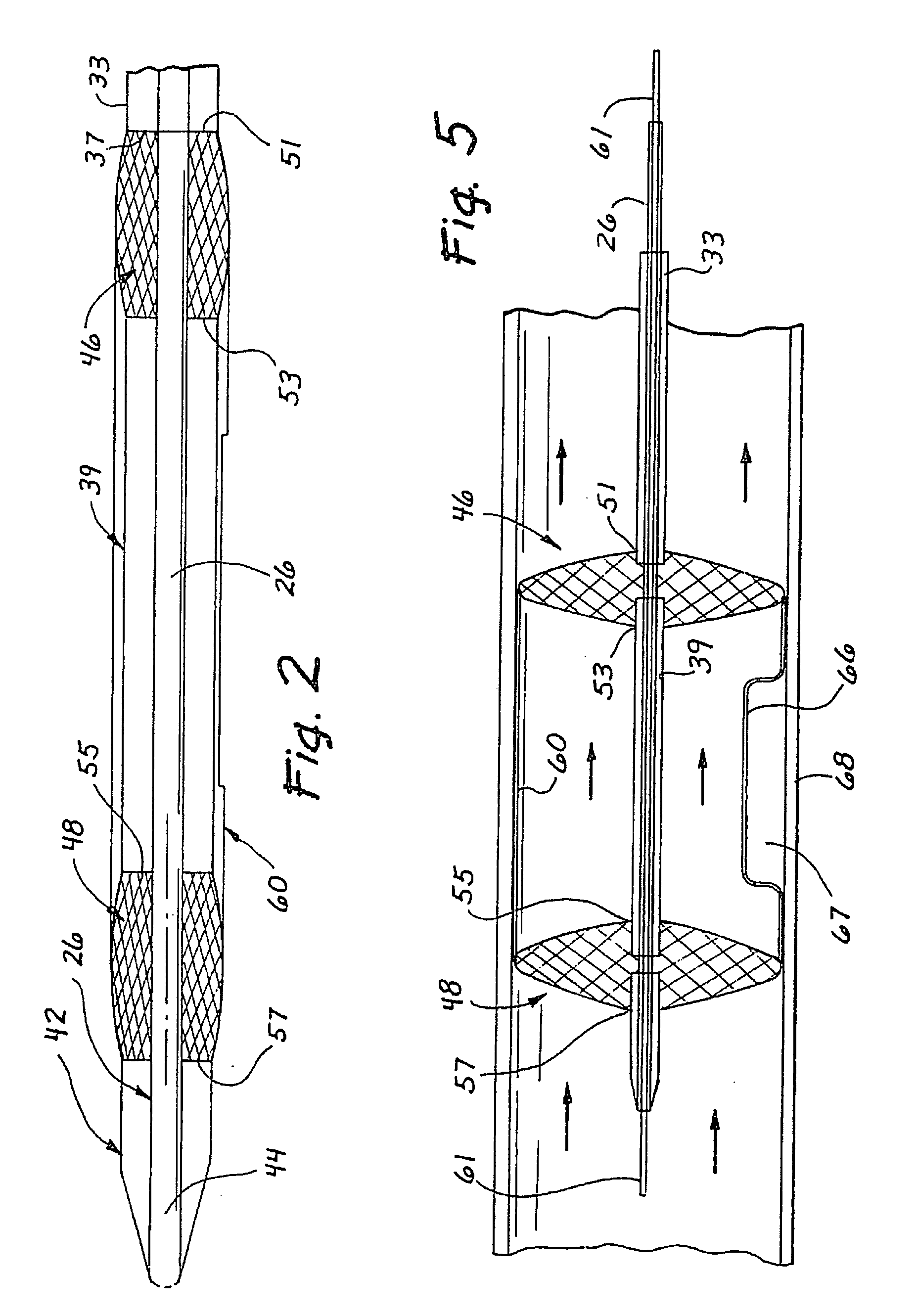Vascular exclusion catheter
a vascular exclusion and catheter technology, applied in the field of vascular exclusion catheters, can solve the problems of loss of fluid such as blood, invading the general surgical environment with fluid, and many people's perception of trauma, and achieve the effect of convenient fluid flow and simple us
- Summary
- Abstract
- Description
- Claims
- Application Information
AI Technical Summary
Benefits of technology
Problems solved by technology
Method used
Image
Examples
Embodiment Construction
[0040] An exclusion catheter apparatus is illustrated in FIG. 1 and designated generally by the reference numeral 10. This particular apparatus 10 is adapted to exclude a segment of a body conduit while facilitating flow through the remainder of the conduit. The apparatus 10 comprises a handle assembly 20 with a hand piece 22 and an axially movable thumb slide 24. The thumb slide 24 is coupled to an inner elongate member 26 of a tube assembly 31. In the preferred embodiment, the inner elongate member 26 comprises a tube with a hollow core or lumen 27. Alternatively, the inner elongate member 26 may have a solid core and, thus, comprise a wire, for example.
[0041] The handle assembly 20 is coupled to the tube assembly 31, which in this embodiment comprises a first proximal outer tube 33 coupled to a distal portion 35 of the handle assembly 20. The inner elongate member 26 is disposed within the proximal outer tube 33, and extends distally outwardly from a distal tip 37 of the outer t...
PUM
 Login to View More
Login to View More Abstract
Description
Claims
Application Information
 Login to View More
Login to View More - R&D
- Intellectual Property
- Life Sciences
- Materials
- Tech Scout
- Unparalleled Data Quality
- Higher Quality Content
- 60% Fewer Hallucinations
Browse by: Latest US Patents, China's latest patents, Technical Efficacy Thesaurus, Application Domain, Technology Topic, Popular Technical Reports.
© 2025 PatSnap. All rights reserved.Legal|Privacy policy|Modern Slavery Act Transparency Statement|Sitemap|About US| Contact US: help@patsnap.com



